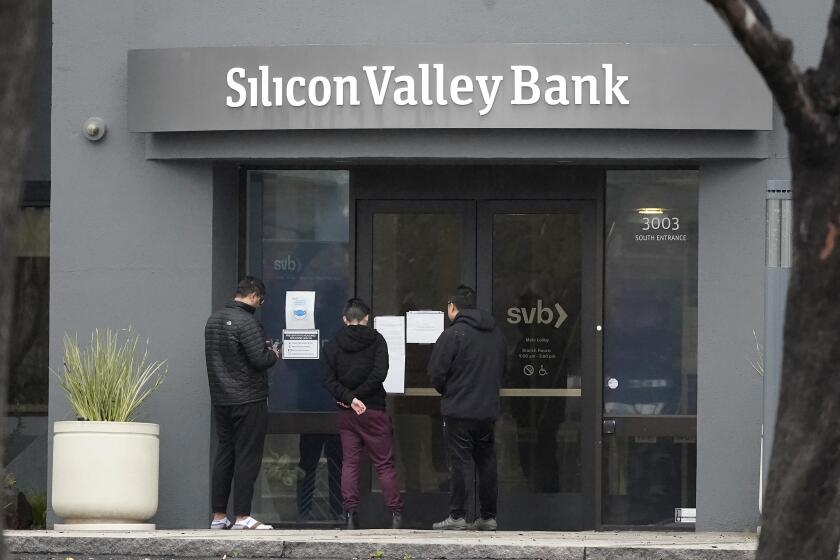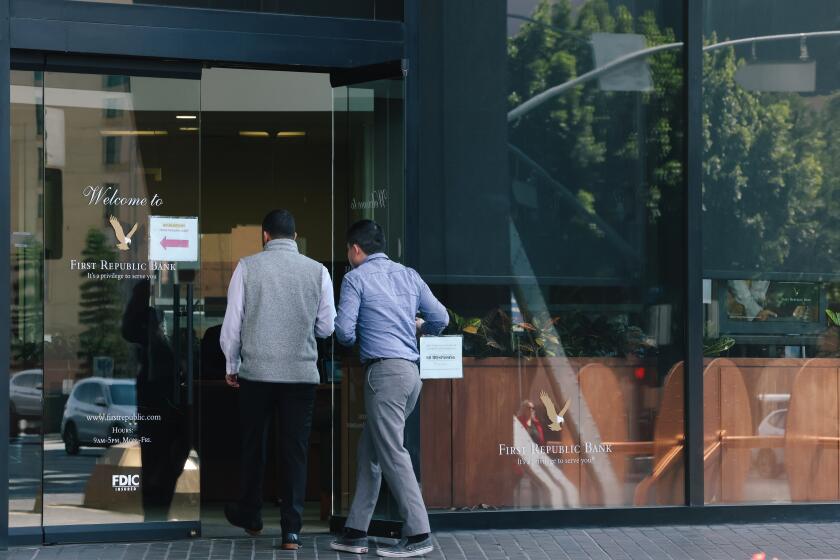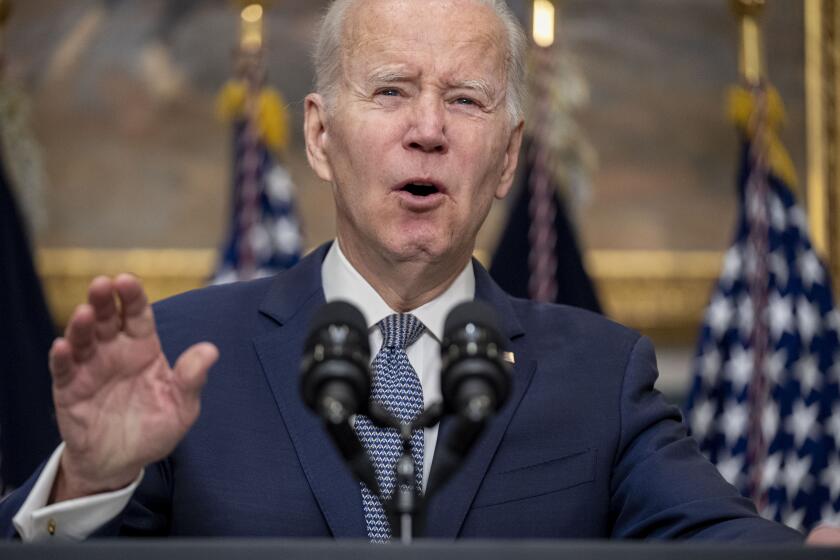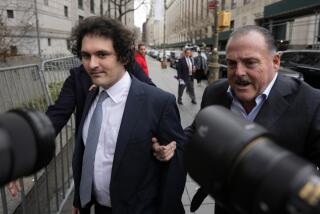Making sense of Silicon Valley Bank’s failure: What it means for your money
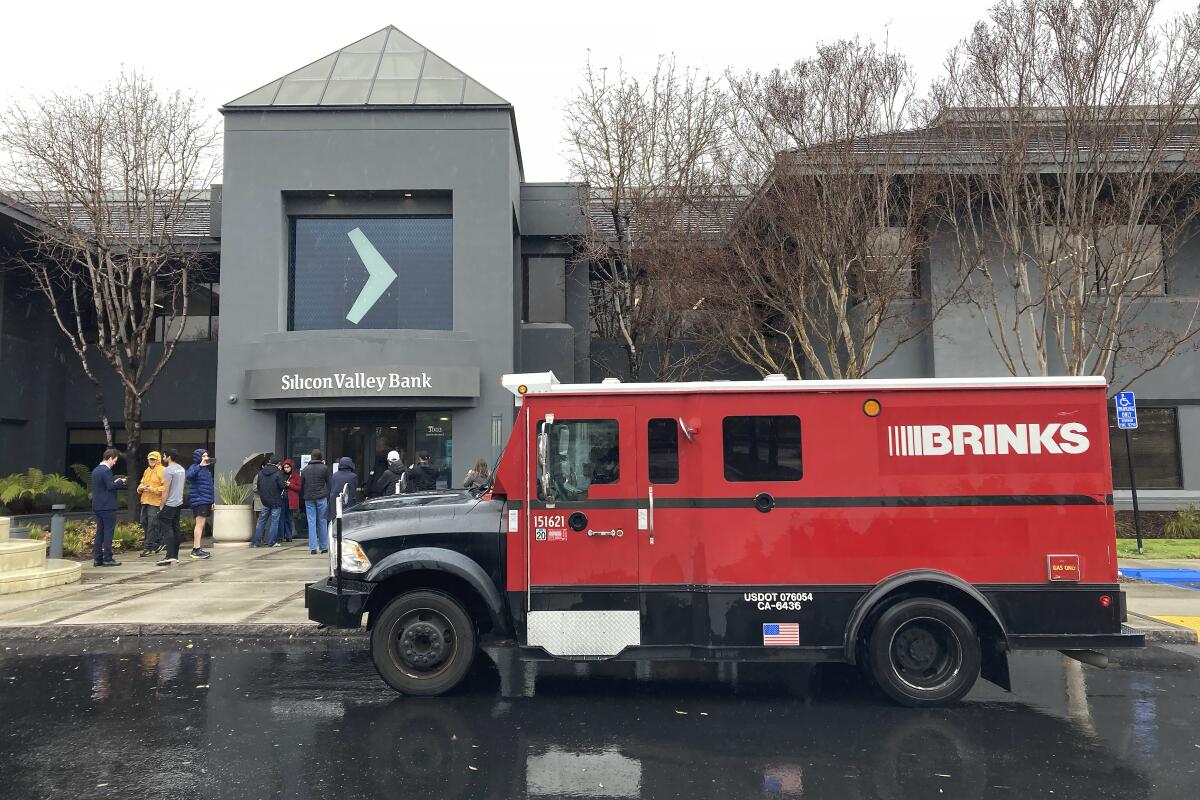
- Share via
It’s never a good sign when “bank collapse” is trending on Twitter.
Such was the case Monday as investors pummeled shares of First Republic Bank and Western Alliance Bancorporation, among several other regional financial institutions. Evidently, they feared that these banks would suffer the same fate as Silicon Valley Bank in Santa Clara, Calif., which was taken over Friday by the Federal Deposit Insurance Corp., and Signature Bank in New York City, which was shut down Sunday by state regulators.
The rapid rise in interest rates has been a challenge for banks in general, reducing the value of some of their safest investments. But banking experts say the circumstances that toppled Silicon Valley Bank and Signature Bank were so unique, and the response from the federal government Monday so aggressive, that depositors in other banks can stay put rather than shifting into crisis mode.
Besides, at least part of the doomsayer wing on Twitter appeared to have a rooting interest in a wider collapse. Some were conservative critics of the Biden administration, but others were business executives eager for the government to protect their uninsured deposits (which the feds eventually did).
Republican entrepreneur Vivek Ramaswamy (who is running a long-shot presidential campaign) tweeted Sunday that venture capitalists and startup executives who stood to lose their deposits at Silicon Valley Bank “are going *out of their way* to push a narrative that there’ll be a bank run on Monday if SVB depositors aren’t bailed out by the government. They’re yelling fire in the proverbial theater, hoping that everyone runs and knocks down a candle on their way out — actually starting a fire that may not otherwise have existed.”
Here’s what you need to know about the latest developments and what the best course for you may be going forward.
Assuring the public a crisis in the banking system was under control, President Biden blamed his predecessor for creating the conditions for the collapse of Silicon Valley Bank and Signature Bank.
Is my money safe in the bank?
Regardless of how resilient or fragile your bank may be, the answer will be yes for an overwhelming number of people. That’s because federal insurance programs will protect all the money typical Californians have squirreled away in a bank or credit union.
For each depositor, the FDIC ordinarily insures a total of $250,000 in checking, savings, certificates of deposit and money market accounts at participating institutions. (The vast majority of banks are insured; you can confirm whether your bank is by checking this directory at FDIC.gov.) The FDIC’s limit applies to each bank where you do business, so if you have $250,000 at Bank A, $150,000 at Bank B and $300,000 at Bank C, all but $50,000 at Bank C would be automatically insured.
By way of comparison, the median amount that Americans have in banks is $5,300 per household, according to the latest Federal Reserve survey (from 2019). The average amount is $41,600. So for all but a small percentage of borrowers, the FDIC’s $250,000 figure is an aspiration, not a limit.
Credit unions have a similar insurance program from the National Credit Union Administration, with the same $250,000 limit.
For businesses with large payrolls, however, $250,000 can be a real issue. The federal takeover of Silicon Valley Bank on Friday, which temporarily cut off customers’ access to their funds and jeopardized amounts over $250,000, came just as some companies were about to cover the cost of their bimonthly paychecks. That’s one of the reasons the Biden administration announced Sunday that it was waiving the $250,000 limit and giving customers of the two failed banks access to all the money they’d deposited.
The point, according to a joint statement from the Fed, the FDIC and the Treasury Department, was to send a message that strengthens public confidence in the banking system and discourages more bank runs. And that message should be effective, said Jeffrey Ball, the chief executive of the Orange County Business Council and the founder and former CEO of Friendly Hills Bank in Whittier.
Now, Ball said, businesses don’t need to make any preemptive moves with their deposits at other banks. “I think the precedent that was set ... should give you confidence that you will be able to access your operating funds going forward,” Ball said.
Economist Joseph E. Gagnon, a senior fellow at the Peterson Institute for International Economics, was not so sanguine. “If you have uninsured deposits, you might want to think about the health of your bank. But you’re probably feeling that’s less urgent now,” he said. “You probably think this precedent the administration has set is going to protect you. ... [But] anyone who has uninsured deposits should certainly think about this.”
The Silicon Valley Bank collapse sent some business owners and individual account holders scrambling for safe places to put their money.
Is this another bailout like the one in 2008-09?
At this point, no.
Both banks have investments and other assets that may be substantial enough to cover the withdrawals made by their depositors. According to the FDIC, those depositors are first in line to be made whole; if there’s anything left, it will go first to secured creditors (i.e., companies that billed the bank for services that haven’t been paid for yet), then to investors who purchased the banks’ bonds, and finally to investors who hold the banks’ stock.
If the assets don’t generate enough money to cover all the deposits, the FDIC will have to cover the costs it incurs by charging banks a special assessment. As with any other insurance program, the banks carrying the insurance are the ones that pay for it.
The banks’ customers and investors, not taxpayers, ultimately pay for deposit insurance through higher fees, lower interest payments and reduced returns. That may be a distinction without a difference, however, Gagnon said. Just about everyone who’s a taxpayer has a bank account, he said, and the cost of the latest rescue is “going to be paid for by just about anybody that has a bank account.”
Assuring the public a crisis in the banking system was under control, President Biden blamed his predecessor for creating the conditions for the collapse of Silicon Valley Bank and Signature Bank.
Why did Silicon Valley Bank fail?
In the Great Recession, banks nearly failed because their investments in housing-related securities plunged in value after the housing market crashed. This time, the problem wasn’t risky investments, but rather a mismatch between longer-term investments and short-term demands for cash by depositors.
Donald P. Johnson, vice chairman of the American Business Bank board, said SVB and Signature were victims of a sharply changed banking landscape. Long years of low interest rate targets set by the Federal Reserve and tepid economic growth reduced the demand for bank loans, prompting banks to put more of their deposits into longer-term Treasury bills and municipal bonds in search of higher returns, he said.
When the Fed drove up interest rates sharply in the last year to fight inflation, the value of those bonds dropped. So when Silicon Valley Bank had to sell some of those bonds to raise cash, Johnson said, it took a hefty loss, which helped push down its stock price and fed concerns about the bank’s health.
That, in turn, triggered a number of tech companies with huge accounts at the bank to rush for the exits Thursday — spurred in part by their venture capitalist backers — resulting in an astounding $42 billion worth of withdrawals Thursday. Regulators stepped in after that, worried that the bank wouldn’t be able to meet the immediate demand for cash.
Gagnon said he was surprised that the bank examiners supervising Silicon Valley Bank allowed the problem to develop as it did. “This is a very obvious risk they were taking on,” he said, referring to the long-term investments. “It was an enormous part of their balance sheet. ... I would be surprised if a lot of other banks would have this issue. It’s like Banking 101, don’t do too much of this.”
One possible explanation, he said, was the bank’s unusual reliance on depositors with huge accounts. Depositors with relatively small accounts don’t generally pull out their money and search for higher rates when interest rates go up, Gagnon said, so having a mismatch between a bank’s long-term investments and short-term deposits isn’t a big deal. But Silicon Valley Bank didn’t have the luxury of customers who would stick around no matter what.
The 2010 Dodd-Frank Wall Street Reform and Consumer Protection Act, which was enacted in the wake of the subprime loan fiasco, required regulators to test banks with more than $50 billion in assets to see whether they could withstand certain types of stressful events, such as a sharp rise in interest rates. That’s the sort of test that would have detected the problems faced by Silicon Valley Bank, Gagnon said. But Congress passed and President Trump signed a bill in 2018 raising the threshold to $250 billion, a change that exempted Silicon Valley Bank from the extra scrutiny.
The Fed said Monday that it would review the “supervision and regulation” of Silicon Valley Bank “in light of its failure.”
When Silicon Valley Bank went down, Signature Bank experienced a similar run of withdrawals from customers with large amounts of uninsured deposits. This bank also had accepted cryptocurrency deposits, but it’s not clear what role that played in its troubles. One factor for both banks, Johnson said, was that they had expanded aggressively — too aggressively, he said.
Critics say that both banks failed to manage the risks posed by inflation, which started well before the Fed raised rates. Johnson agreed but said the bottom line was the public’s view of the banks. “The perception of whether a bank is good or bad makes a difference as to whether it’s going to make it or not,” he said.
About The Times Utility Journalism Team
This article is from The Times’ Utility Journalism Team. Our mission is to be essential to the lives of Southern Californians by publishing information that solves problems, answers questions and helps with decision making. We serve audiences in and around Los Angeles — including current Times subscribers and diverse communities that haven’t historically had their needs met by our coverage.
How can we be useful to you and your community? Email utility (at) latimes.com or one of our journalists: Jon Healey, Ada Tseng, Jessica Roy and Karen Garcia.
More to Read
Inside the business of entertainment
The Wide Shot brings you news, analysis and insights on everything from streaming wars to production — and what it all means for the future.
You may occasionally receive promotional content from the Los Angeles Times.
